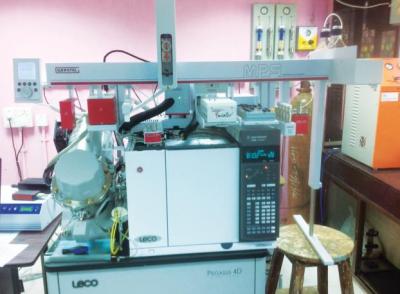Two-dimentional gas chromatography with time of flight mass spectrometer facility

Description
Two-dimensional Gas Chromatography with time of flight mass spectrometer (GC-GC-TOF-MS) system with gerstel auto sampler can facilitate high end separation of volatile organic compounds in highly complex mixtures and environmental samples. The two-dimensional output helps in resolving the peak of target analytes even when matrix interferences are present. The enhanced spectral collection rate of the TOF-MS detector together with the software capabilities can help in de-convolution of co-eluting compounds.
Make and Model
Leco, Pegasus 4D with Agilent 7890B GC
Available mode for use
Following injection modes are possible: Liquid/gas injection Cooled injection system and thermal desorption unit (CIS-TDU) Headspace injection Stir bar sorptive extraction (twister) and solid phase micro-extraction (SPME) Pyrolysis
Specifications/Features
- High resolution gas chromatographic separation can be achieved for complex samples, when operated in 2-D mode
- Independent temperature programming for each of the columns possible
- MS can collect > 20 full range spectra across a 50ms GC peak
- High dynamic range can be achieved
Application
- The system is particularly suitable for applications from following fields:
- Environmental
- Geochemistry
- Biological
- Chemical/Chemistry
Faculty in-charge
Contact Email
gcgctofms@iitb.ac.in
Location
Room No. 114, Ground floor, Centre for Research in Nanotechnology and Science
Contact No: 022 2159 6376
Other Contact Person
- Ms. Mursaleen Shaikh
